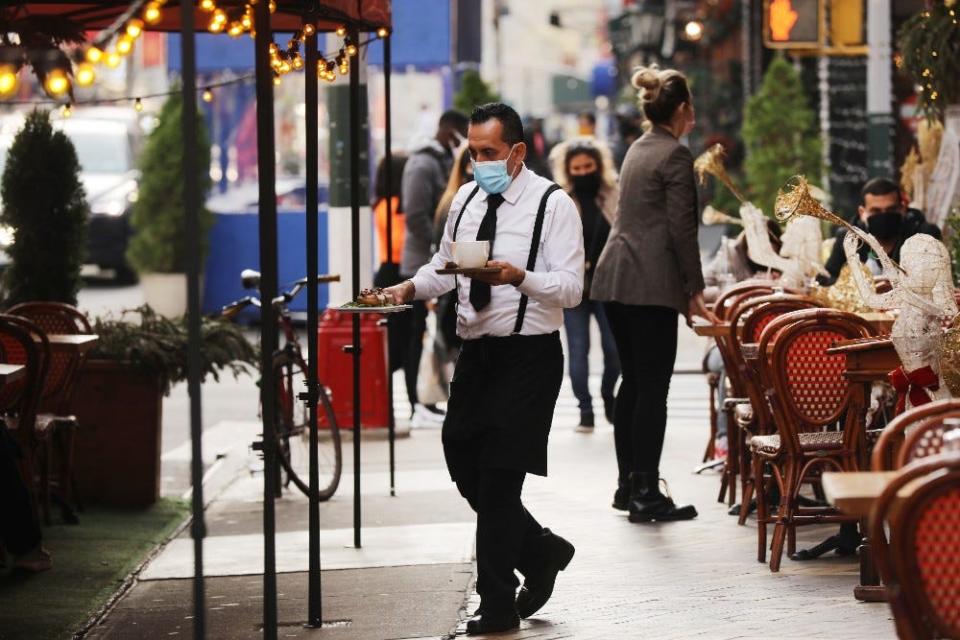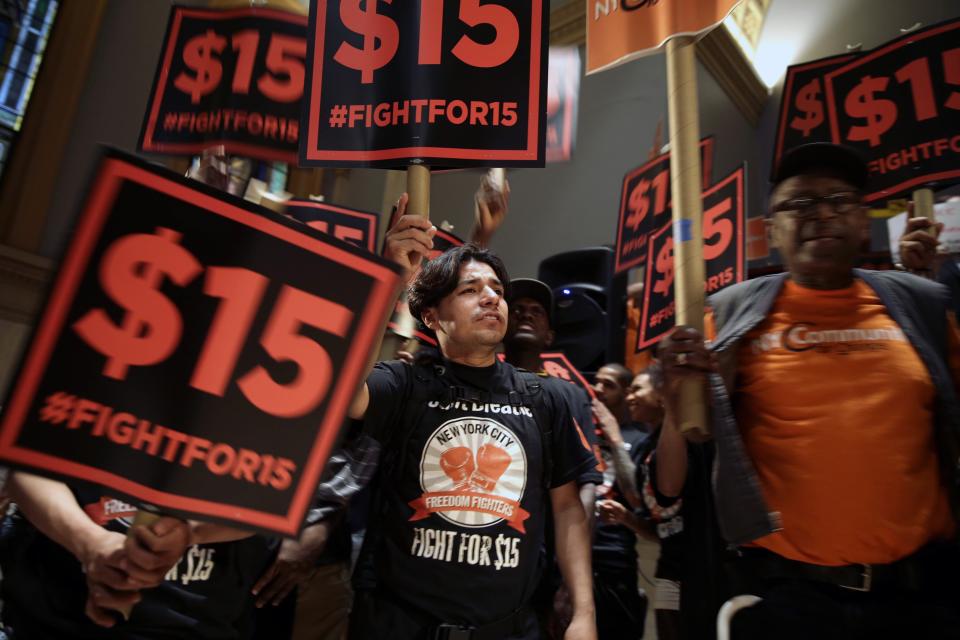Upstate NY's minimum wage to hit $14.20 by year's end. Why lawmakers want more.
Upstate New Yorkers will see a hike in their minimum wage in the new year, as part of the state’s march toward a $15 minimum wage for all residents.
Workers outside New York City, Long Island and Westchester County will see their minimum wage go up to $14.20 an hour - up from $13.20 - on Dec. 31, as part of an incremental increase schedule set by lawmakers.
New York City and other downstate areas have already reached the $15-per-hour threshold after several annual increases. New York City was the first to reach $15 per hour in 2019, among both large and small employers.
Additionally, all fast-food workers in the state make $15 per hour.

New York passed legislation for the minimum wage scale in 2016, with the first increases under the law taking place in December of that year. Annual increases for the state (outside the downstate regions) will continue until they reach $15 per hour, and will be set each year by the state budget director, based on economic indices like the Consumer Price Index.
Now, some lawmakers are pushing New York to go further, citing high inflation rates and high cost of living in metro areas.
High rock salt prices incoming for NY?Highway heads fear surge in rock salt costs if Gov. Hochul signs 'Buy American' bill
NY bans sale of pet store pets NY Puppy Mill Pipeline Bill signed into law by Gov. Hochul
Pushing ahead to $21.25 per hour?
Lawmakers proposed a bill to be considered in the coming legislative session that would raise the minimum wage in New York City, Long Island and Westchester County to $21.25 per hour over a three-year period, spanning 2024 to 2026.
The proposal would see the rest of the state reaching $20 per hour in 2026, and $21.25 by the following year. A version of the bill was proposed in the Legislature in 2021, but didn’t go anywhere.
Lawmakers and advocates argue that these numbers reflect what New York’s wage would have been currently, if increased annually since 2019 to account for cost of living increases and worker productivity gains.
“The family budgets of New York’s working families are being squeezed to an unprecedented degree and working families urgently need a minimum wage that protects them against the ravages of rising prices,” said Assemblymember Latoya Joyner, D-Bronx, who is a co-sponsor on the bill and chair of the Assembly Labor Committee.
New York was a national leader on minimum wage when its legislative package passed six years ago, but now, dozens of cities and counties have wages over $15 per hour, the Raise Up NY Coalition noted when its minimum wage campaign launched in November.

“$15/hour just isn’t cutting it in New York City anymore,” Jumaane Williams, New York City’s Public Advocate and a former candidate for New York governor, said on Twitter in November. “As the cost of living increases, our pay should, too.”
But business leaders are wary of the legislation, saying it would compound the myriad headwinds small businesses faced during the COVID-19 pandemic and in its aftermath.
“New York’s small businesses, from Long Island to Buffalo, are dealing with unending financial hardships,” including labor shortages, supply chain disruptions and spiking utility costs, the National Federation of Independent Businesses New York state director Ashley Ranslow said in a November statement.
“How lawmakers could consider adding another expense to small business’ bottom lines is unfathomable,” Ranslow added.
This article originally appeared on New York State Team: Upstate NY's minimum wage to hit $14.20 an hour in 2023.

